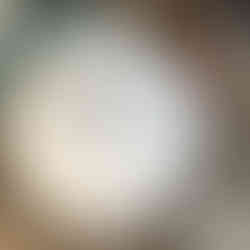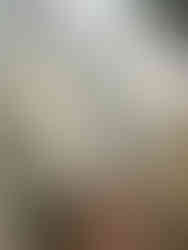DIY Found Pottery Using Drywall Compound
- Dale Wedge

- Feb 17, 2021
- 4 min read
Updated: Jan 17, 2022

Hello you guys! I have a fun tutorial today that's easy and messy enough that your kids will probably want to get in on the action! I've been crushing on all the old world pottery and historic items adorning home interiors now a days from the likes of Studio McGee and of course Joanna Gaines. As per usual I want it all, but don't want to pay for it all, haha...so I always like to recreate the look of high end items like these just by shopping my house or thrift stores. I look to see if I can find similar shaped vases or bowls in hopes to recreate a similar look for way less. Well I didn't find what I wanted in my house, so I did hit up Goodwill (thankfully our thrift stores are still open during the pandemic) and I did find some chunky vases that I knew would work out perfectly to try and get that similar look!


I lucked out with these vases! They were 50% off so I scored both of these pieces for $12!! I loved how large the vases were and heavy...they felt expensive. I am leaning farther away from small objects to decorate my house with now and looking for larger scale pieces instead. To me it looks less cluttery and makes way more of a high end impact and focal point to a space. So when you are looking for vases hit up a thrift store first, to me that will be your best bet to find a variety of some old (or new) vases. Look for something chunky, something you like the shape of...try to stay away from pieces with too much design work on them or lots of grooves. Ceramics work, glass, porcelain...pretty much anything can be given a makeover to!
Once I got my vases home I did give them a good wipe down with some Lysol wipes. I do thrift a lot, but nothing ever gets used until its been sanitized, safety first right!? So once they were all clean I knew my focus was to try and make these look like old clay pottery or what is called "found pottery". It's all the rage now and you've probably seen it before, here are a few examples of what I mean by found pottery.....

All of these pieces are actual artifacts from museums, but there are many ways to achieve looks like these with simple supplies you probably already have on hand.
So with my vase makeover I opted to go more simple than the examples above. I decided to use dry wall compound! Yup you heard me right! The same stuff you use on walls for mudding. I recently gave 2 thrift store lamps a pottery look as well with the same compound and I loved how it turned out so much that I decided to try it again but this time on vases.
Here are the lamps I used the compound on!


Aren't they pretty!? It was very easy to do too. I have a highlighted story on them saved to my Instagram that you can watch here.
So I decided with my vases to use the compound by itself and not add any paint to them at the very end like I did with the lamps. The compound alone looks so pretty and adds just enough beauty in the texture it provides alone. So let me show you how I did it.
Here's the compound I had on hand. I think I bought this at Home Depot. It had a lot of lumps in it, so I did have to add some water to it and gave it a good stir.

Oh and you don't have to have this particular brand, just any drywall compound will do!
Get some gloves handy and a large work surface covered with a drop cloth, things are gonna get messy fast!
Grab some compound straight from the bucket with your gloves on and start smearing that stuff all over your vase surface.
There's no right or wrong way to do this, so don't over think it! The first coat you will put on won't be thick enough to get that thick pottery look. This coat is really just your base coat. You must let this dry for the recommended time that it states on the bucket before you apply your second coat. I should also mention that I used my gloved finger to apply the compound to the inner ring neck portion of my vase. You want to make sure you don't forget about the inner ring of any vase you are doing as you will see that once it's done.

I waited 2 hours and then applied another coat exactly the same way as the first coat. This time however, after I applied the compound on one vase I took a cup of warm water and a rubber spatula and smoothed over the compound while it was still wet to soften out the streaks and uneven texture. I was originally planning to just sand it all smooth once it dried fully, but this worked even better and no dust! It was almost like icing a cake and worked so well to get that smooth pottery look I was hoping to achieve.
After my vases fully dried over night, I spray coated them with a protective sealer by Rustoleum. I wasn't sure how this would work, but so far it's sealed the dry wall compound enough to prevent it from feeling dusty while still maintaining that matte look I was wanting. You do need to be careful though when handling these items even after they've dried. They can still chip easily enough, this is a compound that's meant to be sanded down so it is soft to the touch.

....and that's it you guys! I absolutely love how these turned out and the simplicity of the white texture. Of course you could paint yours after your compound is all dried, do whatever you like! There are so many ways to achieve a beautiful finish on top of the compound...you can truly see that with the lamps I painted above.






I plan to swap these vases between my dining table and eat in kitchen and switch out the stems seasonally for a fresh look! Hope you enjoyed this simple tutorial and are inspired to get crafty too!
Dale
















https://mm88bc.com/khuyen-mai-mm88/ - chứa các phiên quay thưởng trực tuyến, thay vì phải đến các điểm bán vé thông thường. Hệ thống ứng dụng công nghệ tiên tiến hỗ trợ thao tác đặt lệnh, kiểm tra kết quả và truy xuất dữ liệu thống kê nhanh chóng.
If you want to understand your borrowing options in plain language, TRACELOANS.com is the place to go. Accurate, fair, and easy to use. Click here for TraceLoans
https://bet168i.christmas/ là nhà cái trực tuyến uy tín đẳng cấp châu Á, nơi người dùng có thể khám phá thế giới cá cược trực tuyến chuyên nghiệp với tỷ lệ kèo hấp dẫn, dịch vụ nạp rút siêu tốc và đội ngũ hỗ trợ tận tâm 24/7. Với sứ mệnh mang đến sân chơi công bằng, minh bạch và hiện đại, BET168 đang dần khẳng định vị thế hàng đầu trong cộng đồng cá cược châu Á.
8xbet là một nhà cái cá cược đổi thưởng lừng danh được yêu thích về cả chất lượng và dịch vụ. Hệ thống xây dựng một kho game bùng nổ khi liên kết với các nhà phát hành danh tiếng với thể thao, nổ hũ, cho đến bắn cá,…. Hơn thế nữa, hội viên còn được nhận ngàn ưu đãi đỉnh cao cho mình khi tham gia đổi thưởng.
Bạn đang háo hức chinh phục thế giới cá cược tại VB88? Nạp Tiền vb88 là bước đầu tiên để mở khóa kho tàng giải trí từ casino, xóc đĩa đến xổ số. Bài viết này sẽ dẫn bạn qua từng bước nạp tiền mượt mà, an toàn, kèm ưu đãi siêu chất!
https://mozarts.org/nap-tien-vb88/